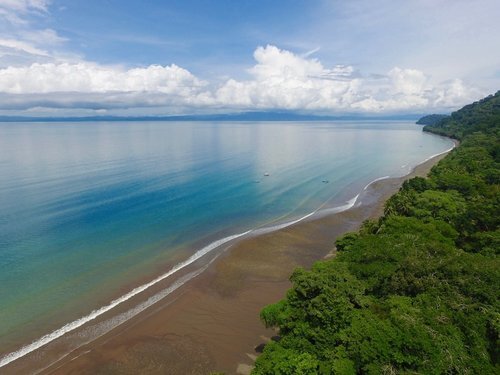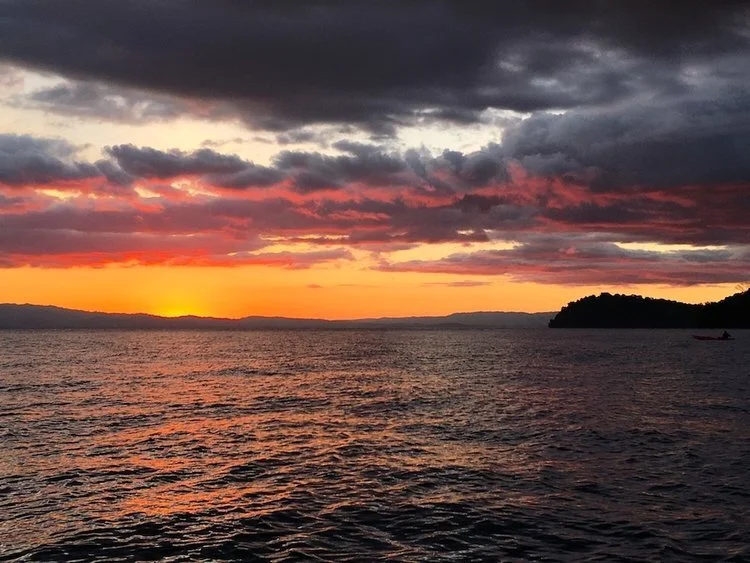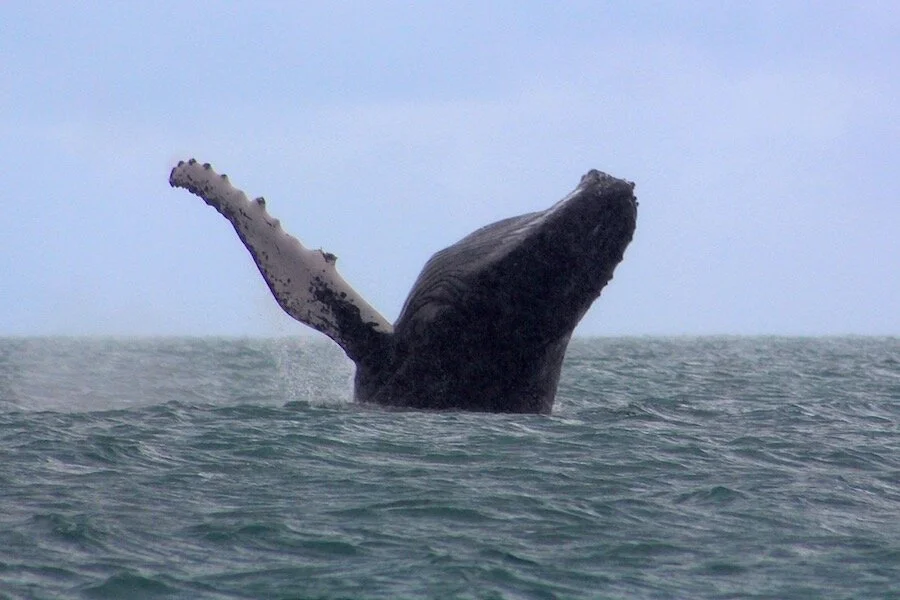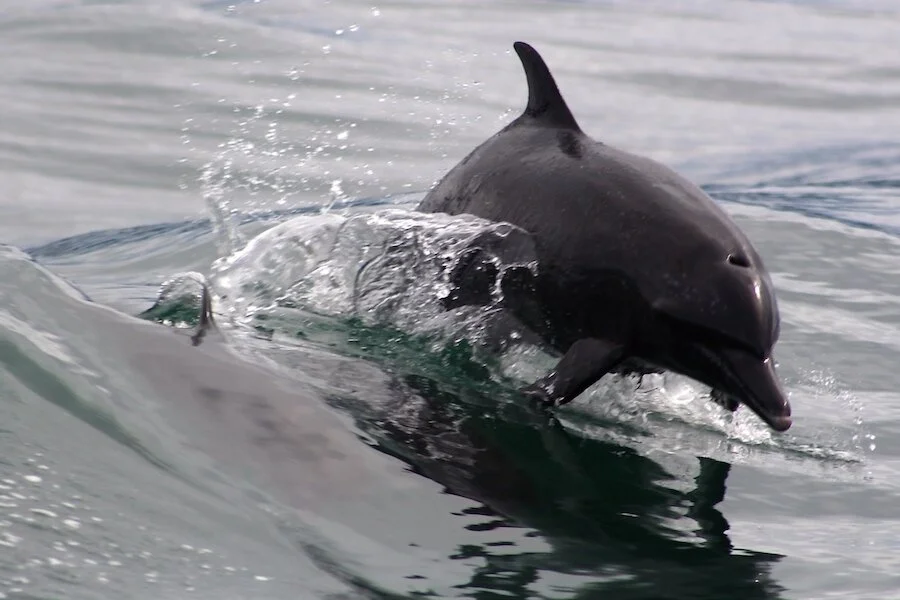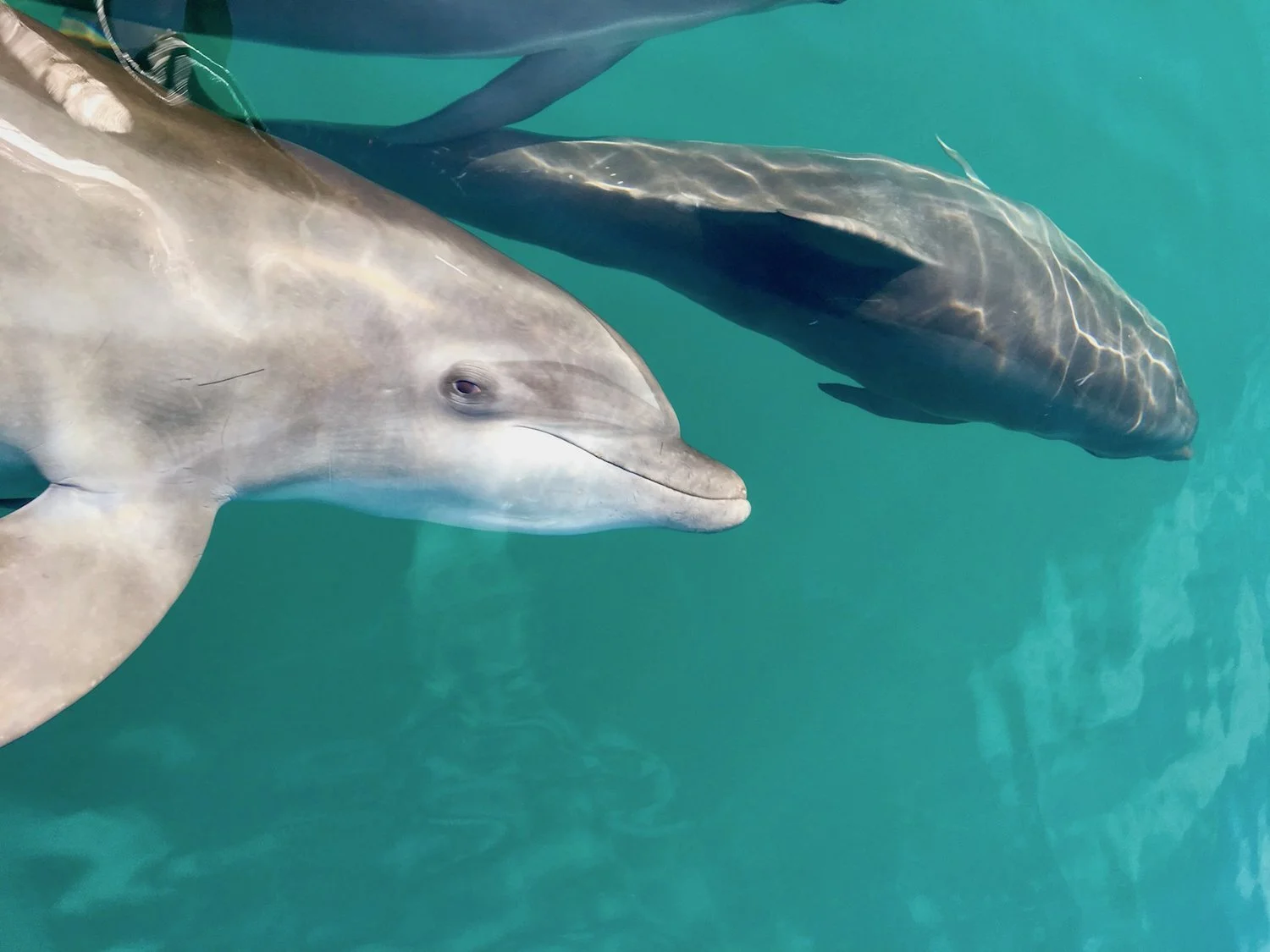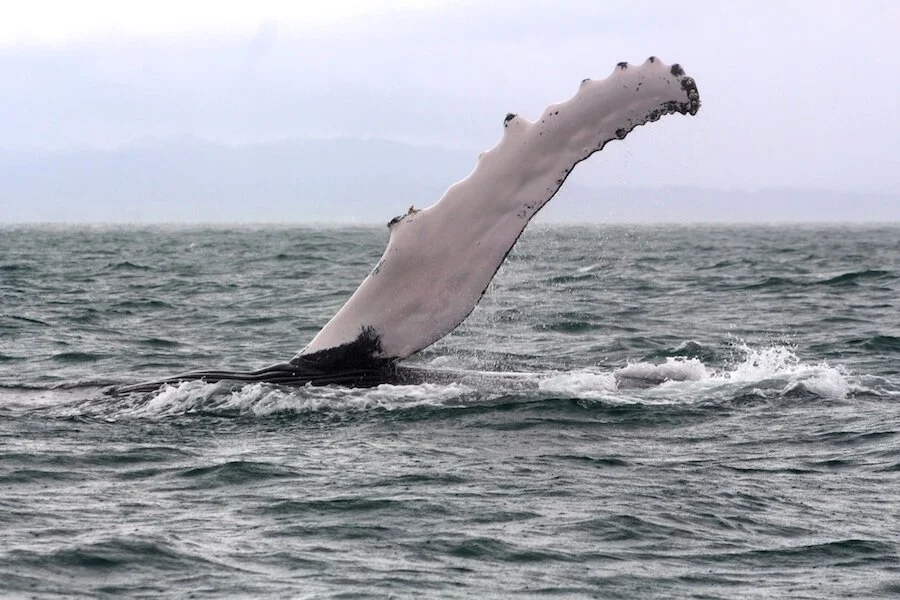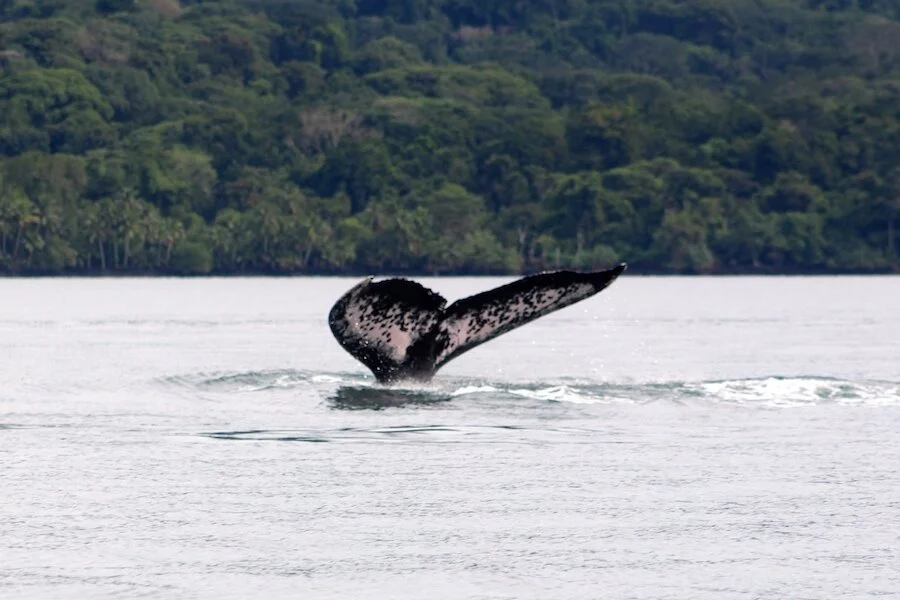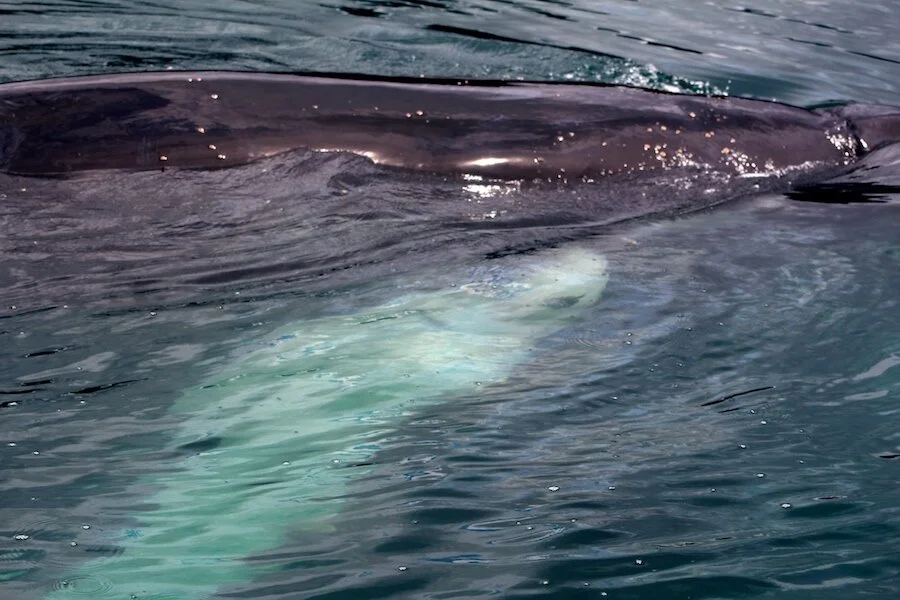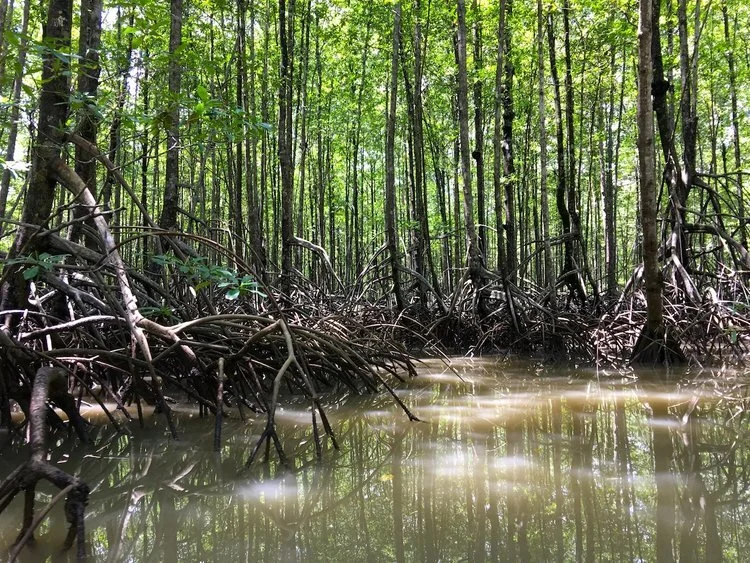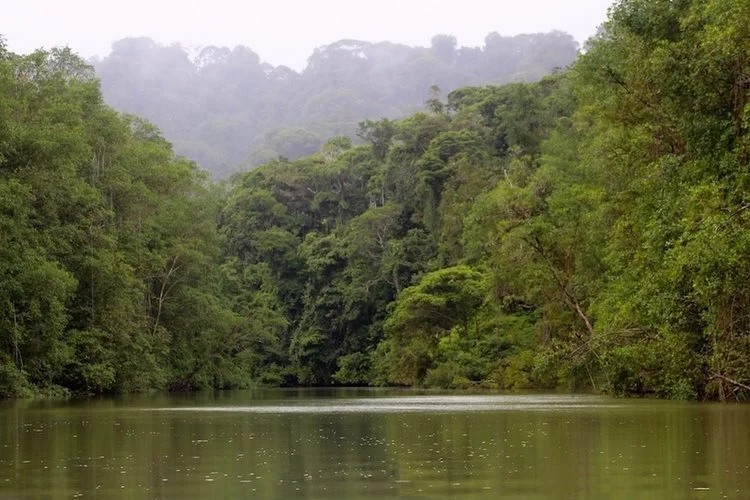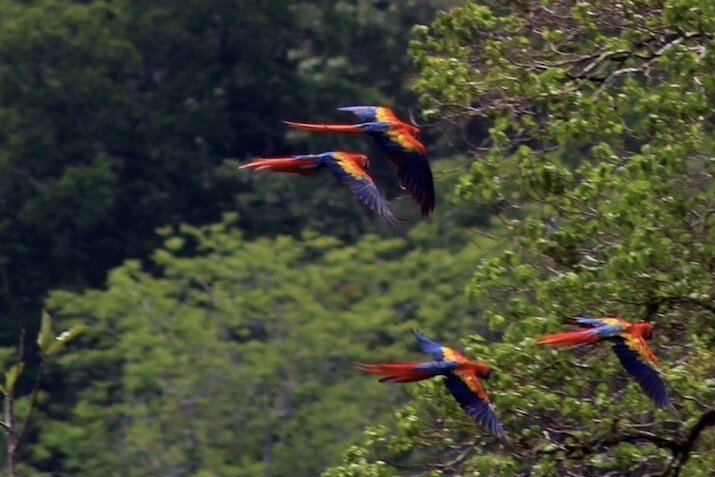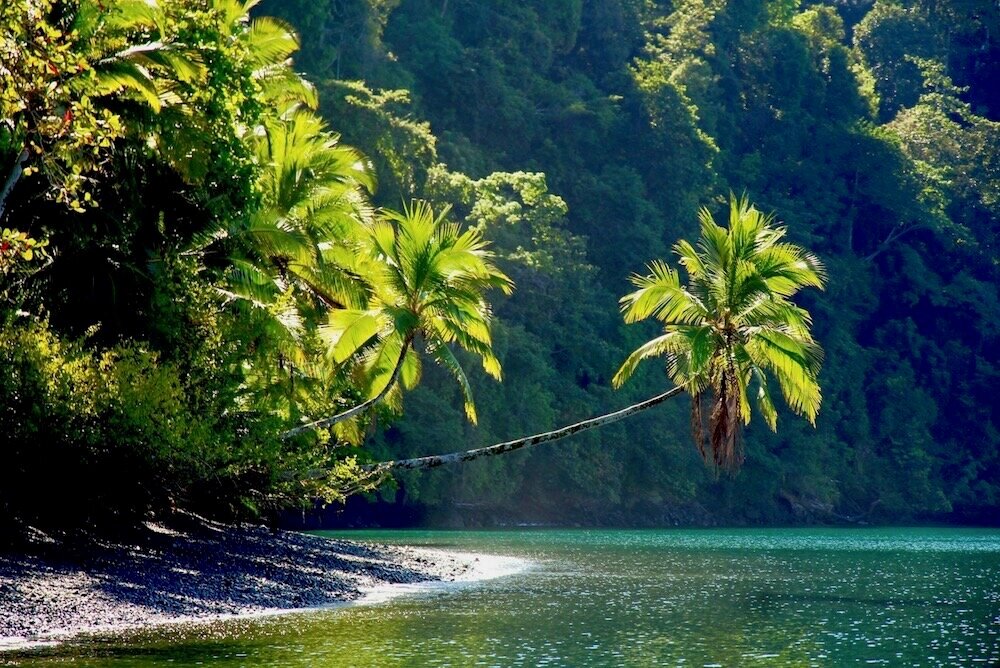
WILD AND PRISTINE
Golfo Dulce and the Osa Peninsula
At Golfo Dulce Retreat, we are nestled in spectacular nature - on land and at sea. Our surrounding primary rainforests, the “crown jewel” of Costa Rica’s national park system, harbour one of the most biodiverse and ecologically significant habitats on the planet with Piedras Blancas National Park at our doorstep, linked through a forest reserve to world famous Corcovado National Park in the Osa Peninsula. The rainforest of Piedras Blancas National Park is also connected through a biological corridor to the park of La Amistad, a UNESCO World Heritage Site, which straddles the border between Costa Rica and Panama and is the largest protected area in Central America. This network of protected areas is crucial for maintaining genetic diversity and facilitating the movement of species between different habitats. It helps to ensure that wildlife populations remain healthy and resilient in the face of environmental changes. The region’s unique combination of climatic and geographical conditions, along with its relatively undisturbed nature, contributes to its immense ecological value.
We are blessed with the abundance of sea life of the Pacific Ocean, yet sheltered within Golfo Dulce. The gulf has been identified by National Geographic as one of the ocean’s 20 wildest places and recognised by Mission Blue as a ‘Hope Spot’ thanks to its unique ecosystem for marine biodiversity. More recently in 2023, The World Cetacean Alliance (WCA) designated Golfo Dulce as a Whale Heritage Area, marking it as the first such site in Latin America. This designation highlights the importance of Golfo Dulce as a sanctuary for cetaceans, particularly for the humpback whales that migrate to the region annually.
These are amazing warm waters where, in the day, dolphins and whales swim wild and free and, at night, algae glow creating one of the most incredible bioluminescence spectacles Earth can offer.

PRISTINE JUNGLE
Our Surrounding Forest
Piedras Blancas National Park in Costa Rica covers more than 30,000 acres of undisturbed tropical lowland primary rainforest and 5,000 acres of secondary forest, pasture land and rivers. Golfo Dulce Retreat and the land that we protect sit within the park and account for almost 3% of the park’s primary rainforest coverage. Tropical lowland wet forests, such as the one that surrounds us and one of the last remaining in Central America, are some of the most threatened and least studied types of vegetation on our planet. Piedras Blancas National Park was officially established in 1991, separating it from Corcovado National Park and designating it as a distinct protected area. The park was formed through a combination of conservation efforts and a recognition of the need to protect one of Costa Rica’s last remaining lowland tropical rainforests on the Pacific coast. The park remains connected to Corcovado National Park, in the Osa Peninsula, through a forest corridor which ensures biodiversity and self-sustaining ecological and evolutionary processes between wildlife populations.
It is mainly through the effort of small entities that the park has since expanded, as charitable organisations and individuals like us bought many privately-owned areas within and just outside of the park, helping to concentrate efforts to halt the deeply damaging deforestation that was taking place in much of the region.
Piedras Blancas hosts one of the most diverse arrays of wildlife on the planet; researchers at the University of Vienna now believe that its biodiversity is very similar, if not higher, than that found in Corcovado National Park - described by the National Geographic as "the most ecologically intense place on earth."
The year round growth opportunities offered by Golfo Dulce's unique climate of sustained elevated temperature (average 26.6ºC/80ºF) and humidity mean that the flora found in Piedras Blancas is among the richest on the planet. It encompasses several thousand different species of plants including hundreds of tree species, herbs and epiphytes, some very rare and in danger of extinction and with a high level of endemism. Some of the larger trees to be found in the Park as well as within our property are ceibas, espavels, gallinazos, balsa, guapinol, and many more. The forest is also host to an abundance of lichen and fungi displaying beautiful fruiting bodies. The species diversity of fungi is second only to that of the insects.

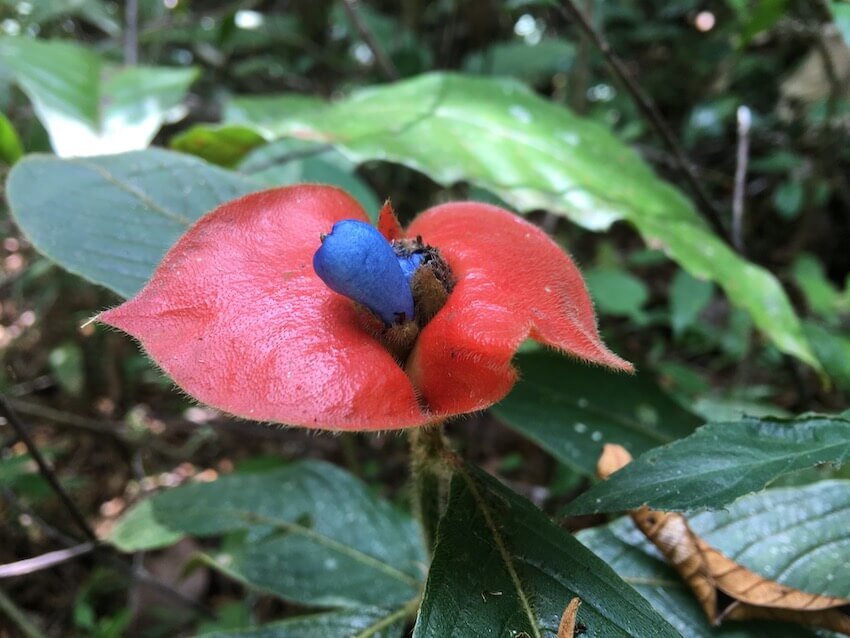

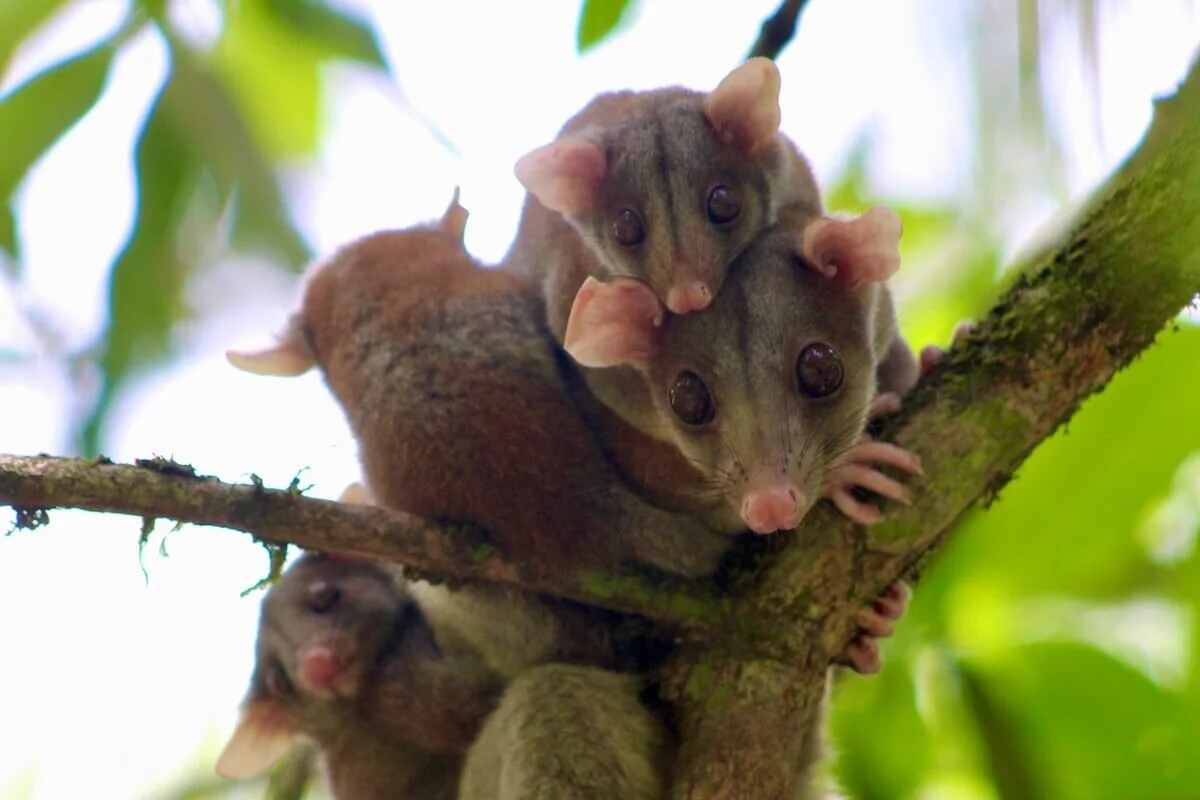
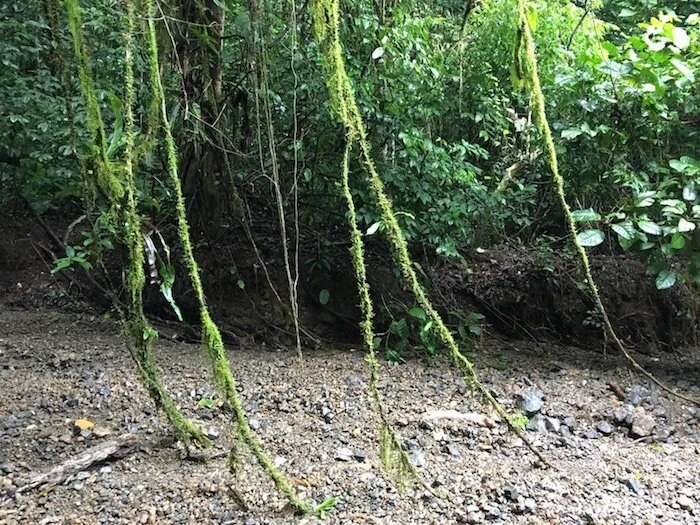
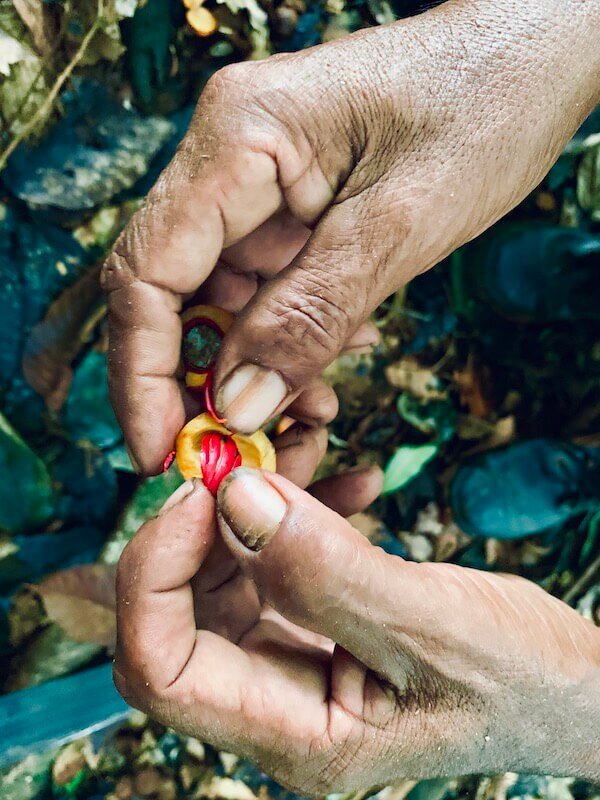
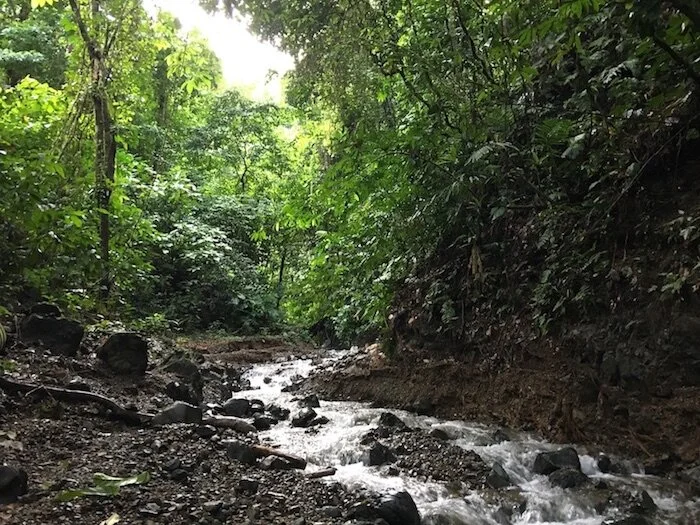

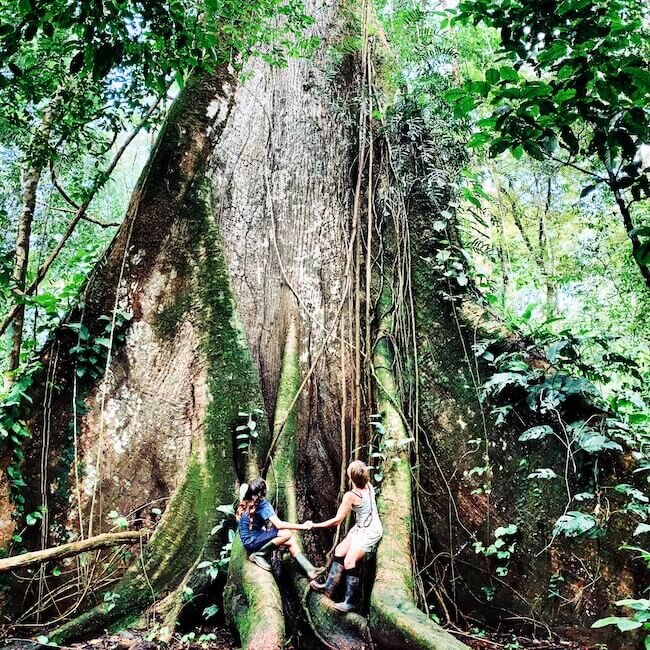

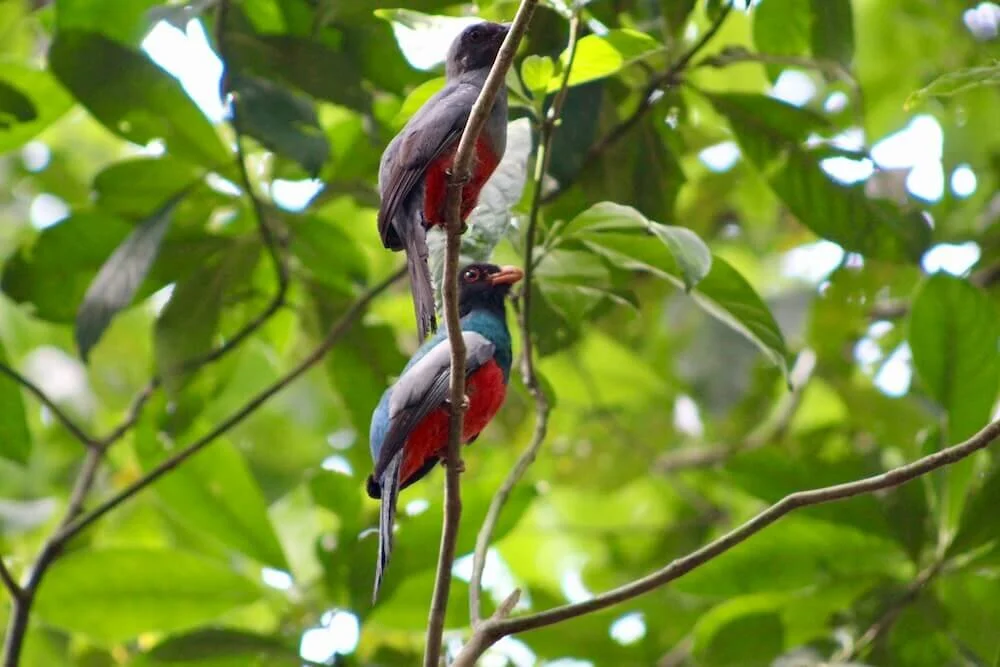

Piedras Blancas National Park's fauna is equally rich. More than 140 species of mammals have been identified, including 5 species of native cats (puma, ocelot, margay, jaguar and jaguarundi), all four species of monkeys found in Costa Rica (howler, spider, white-faced capuchin and squirrel) as well as 53 species of bats.
The park is a crucial meeting point for birds that come from North and South America. There have been 360 different species of birds identified in our property, making Golfo Dulce Retreat a perfect bird watching destination. Amongst others scarlet macaws, toucans, hummingbirds, great curassows, crested guans, trogons, aracaris, honey creepers, herons, tinamous, woodpeckers, wood creepers, antbirds and manakins can easily be spotted. There are also 100 different types of reptiles and amphibians, including the endemic Golfodulcean Poison Dart frog, the iconic red-eyed tree frog and thousands of insect species.
With such an amazing variety of life our surrounding rainforest has to offer, it is no surprise that you will most likely encounter several animals in their natural habitat and see some of the most magnificent trees while staying with us at Golfo Dulce Retreat. We have several forest trails departing from our gardens which cater for all levels of fitness and which will let you explore the wonders of both our secondary and primary forest.
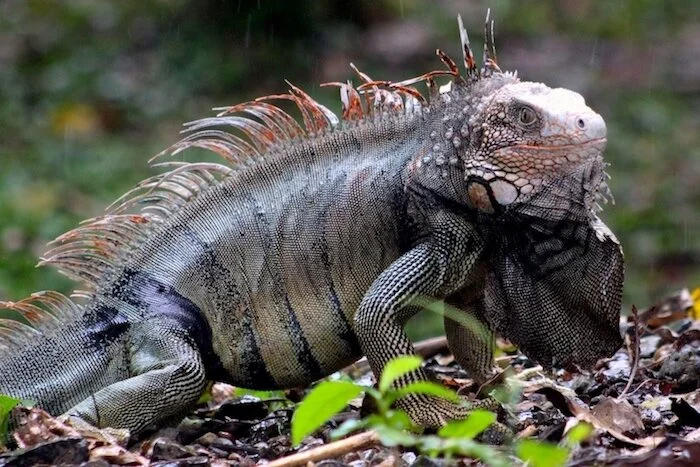
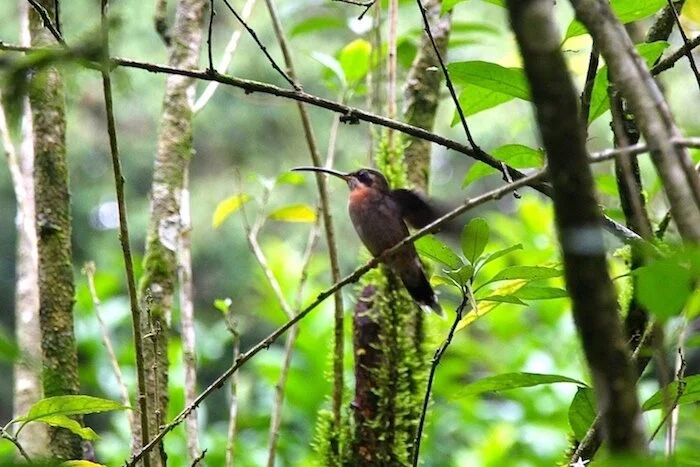
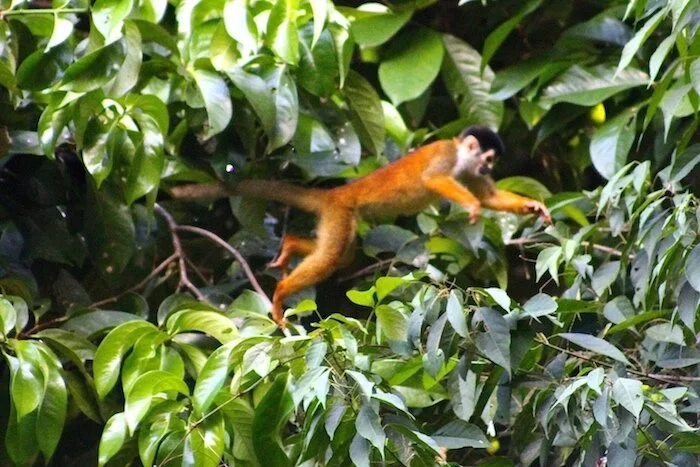
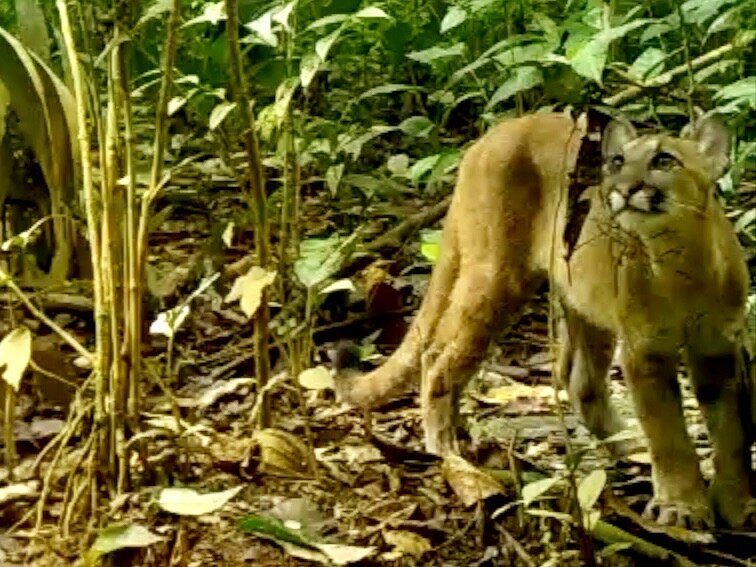
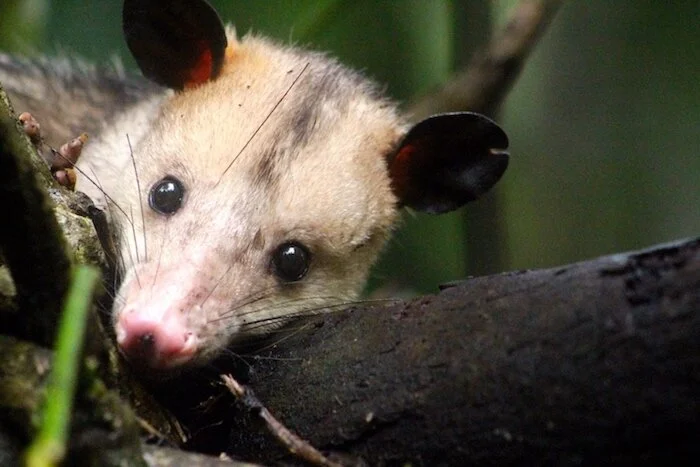
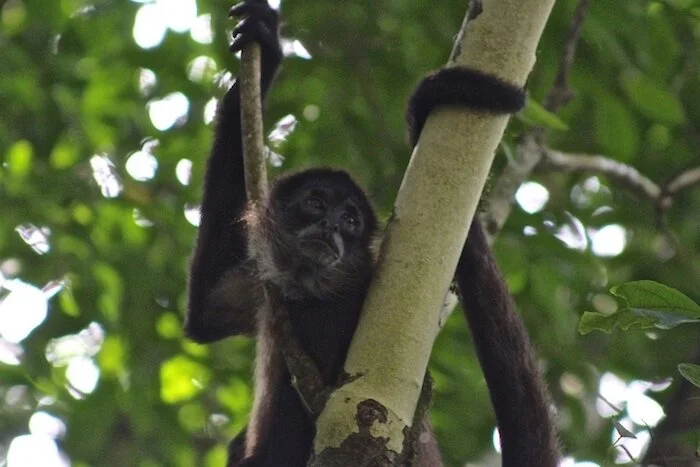
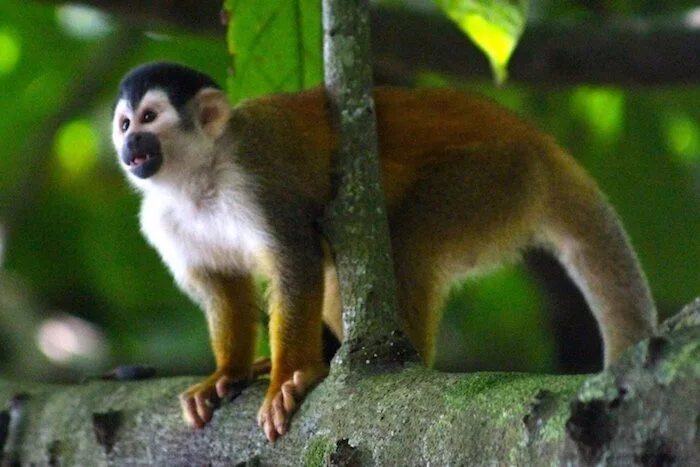




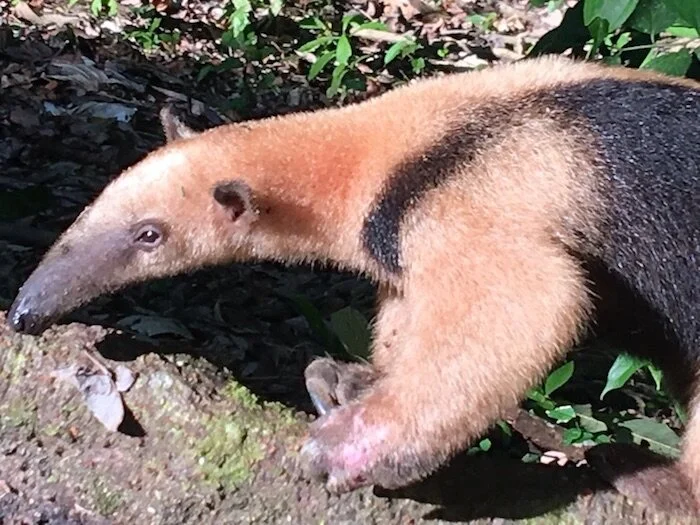
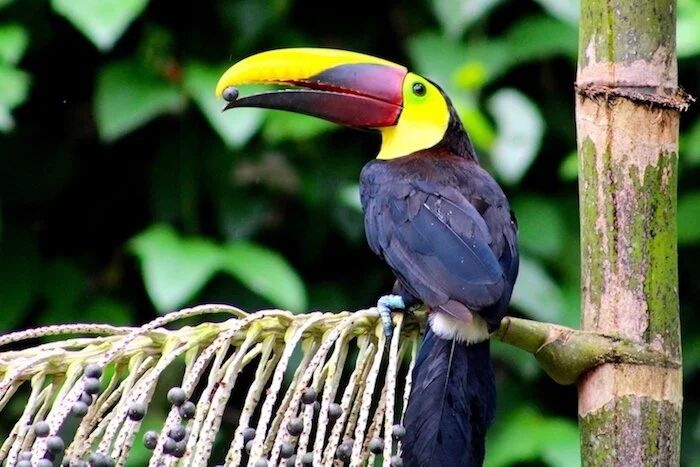
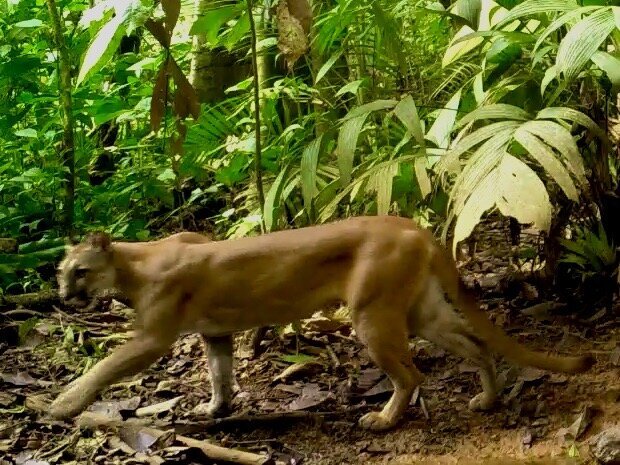

TROPICAL FJORD
The Sweet Gulf
Golfo Dulce, Costa Rica’s hidden gem, takes its name from the large amount of freshwater flowing into it, mainly from four large rivers whose mouths harbour many hectares of protected mangroves. Golfo Dulce is a large bay ringed by secluded beaches which lies between the Osa Peninsula and the southern end of the Pacific Coast. Due to the region’s tremendous biodiversity, the Golfo Dulce region and the virgin rainforests of the Piedras Blancas National Park are the perfect destination for true nature lovers, those seeking adventure and those who want to escape from crowded tourist destinations. During a visit by the Greenpeace ship Moby Dick, Captain Joel Stewart commented in 1996 that there is "so much biodiversity... so many species, that one is almost forced to defend it".
The Golfo Dulce is one of only four tropical fjord-like estuaries in the whole world with the others being the Gulf of Cariaco (in Venezuela), Darwin Bay (in the Galapagos Islands) and Kaoe Bay (in Indonesia). Its depth exceeds 200m in the inner basin and it is sheltered against the open Pacific by a shallow sill (60m) at the southern end. Tidal ranges can be as great as 3.5m or 10 feet.
The gulf forms part of the Central American Volcanic Arc. Its formation is attributed to the subduction of the Cocos Plate beneath the Caribbean Plate. This tectonic activity has created a deep basin with a narrow entrance. The restricted water exchange and the significant depth of Golfo Dulce result in a unique water column structure. The gulf has a stratified water column, with a layer of warm, low-salinity surface water overlying colder, more saline water at greater depths. The deep basin of the gulf can become anoxic (devoid of oxygen) below certain depths, creating conditions that are rare in tropical marine environments. Golfo Dulce supports a high level of biodiversity, both in its marine and coastal ecosystems.
Due to these unique characteristics, the gulf provides a habitat for a wide range of species, including several endemic species. It is an important breeding and feeding ground for various marine resident species including bottlenose, spotted and spinner dolphins and is occasionally visited by false-killer whales. Bottlenose dolphins can often be seen in groups of 5-15 individuals swimming lazily along the coasts, whilst spinner and spotted dolphins are normally found swimming in deeper waters in large groups that can easily exceed 100 individuals.
From January to April, humpback whales from the Northern Hemisphere visit the gulf, whereas whales from the Southern Hemisphere arrive in much larger numbers during the months of late July through mid October. August is when whale watching season truly begins with the arrival of several groups of endangered humpbacks from the freezing waters of Antarctica, which have swam thousands of miles to reach Golfo Dulce in what is known as the longest documented mammalian migration on earth. Here in our gulf, the whales mate and give birth to a single calf; around the age of ten weeks, the young whales have grown strong enough for the long journey south with their mothers, only for the migration cycle to start again the following year. In addition to these giant visiting whales, smaller Bryde’s whales, although not commonly seen, are resident cetacean of the gulf and, where the gulf meets the Pacific, Cuvier’s Beaked Whales and Pygmy Sperm Whales can also be observed.
As well as hosting more than 25 species of dolphins and whales, Golfo Dulce is home to four of the world's 8 different sea turtles, including the critically endangered Hawksbill Turtle, along with manta rays, sailfish, marlin, tuna and sharks such as the critically endangered hammerhead (Sphyrna lewini) and the largest fish in our oceans, the whale shark.
The surrounding mangrove forests, coral reefs, and rainforest contribute to the ecological richness of the area. The mangrove systems found within the gulf, composed mainly of red and black mangrove species, grow in the intertidal regions where salt and fresh water meet. They serve as a buffer from storms, reducing erosion of shorelines and improving the quality and clarity of the water. Our surrounding mangroves are a crucial nursery site for many marine species, including shrimp, crabs and corvina (sea bass). More significantly, recent research by Misión Tiburón has shown that scalloped hammerhead sharks, which are critically endangered according to the IUCN Red List, travel to Golfo Dulce from the UNESCO’s World Heritage Site of Cocos Island, deep in the Pacific, to breed in the sheltered waters of the mangroves at the beginning of the rainy season. Here, young and juvenile sharks will stay for a few years, before heading off to Cocos Island - and possibly beyond to the Galapagos Islands - where they will spend most of their adult lives. It is for this very reason that Golfo Dulce was declared a Hope Spot in 2019 by the world-renowned Mission Blue marine conservation organisation, and Ilena Zanella, founder of Mision Tiburón, was awarded the prestigious Whitley Award in the same year.
Furthermore the waters of Golfo Dulce, which are recognised as an Important Marine Mammal Area (IMMA) by the IUCN, were designated by the World Cetacean Alliance (WCA) as a Whale Heritage Area in 2023, the first such recognition in Latin America.
A great variety of other animals reside within this habitat, including caimans, snakes, monkeys, iguanas, and around 100 species of birds including the endemic mangrove hummingbird.
Golfo Dulce’s marine environment is not only very unique and rich, but also very fragile. Local coral reefs, some of which are thousands of years old, were heavily damaged in the past decades by sedimentation caused by illegal logging, the construction of a coastal road on the opposite side of the gulf and fertiliser runoff from banana plantations. The reefs are now slowly recovering, thanks to the efforts of conservation organisations such as Raising Corals (led by renowned marine ecologist Joanie Kleypas), who propagate corals in a coral nursery just next to Golfo Dulce Retreat and out plant them after a few months. Coral reefs play a crucial role in the overall health of Golfo Dulce and harbour a remarkable variety of fish species including parrotfish, needlefish, triggerfish, pufferfish, surgeon fish, rainbow wrasse, angel and butterfly fish, together with many molluscs and invertebrates.
Another secret harboured by Golfo Dulce's waters awaits to be discovered at night. Bioluminescent dinoflagellate plankton lights up the ocean with sparkles that can be seen when the water is disturbed by the movement of boats or large organisms such as fish and humans (click here to learn more about bioluminescence). This can be seen due to the lack of light pollution and creates a magical experience for swimming under the stars.
One of the most memorable parts of your trip while staying at Golfo Dulce Retreat will be exploring our amazing Golfo Dulce on our boat, visiting remote beaches, looking for dolphins and exploring the mangroves.

NEIGHBOUR WITH A CAUSE
Neighbours With A Cause
At Golfo Dulce Retreat, we are lucky to have as next-door neighbours Rescate Wildlife Rescue Center, a privately-owned Wildlife Reintroduction Site, which, in the last 20 years, has released about 300 scarlet macaws (Ara Macao) into the wild. Scarlet macaws were once present in Piedras Blancas National Park but the population had regrettably been wiped out due to poaching and pesticide use.
Thanks to the hard work of our neighbours, the population of scarlet macaws here is now considered to be self-sustaining and we hope these beautiful birds will continue adorning our skies with no more future threats. Indeed, one of the most memorable encounters you will have while staying at Golfo Dulce Retreat will be with wild scarlet macaws. You will often see these large, colourful birds feeding in the trees around our tropical gardens and you will hear their loud screeching calls throughout the day. Throughout the years, Rescate Wildlife Rescue Centre has released many other species of endangered animals, including squirrel and spider monkeys, great curassows, red-lored parrots, mud turtles and others.
Although Rescate Wildlife’s location near us is not open to the public, you can help support their invaluable work by visiting their main centre in Costa Rica at La Garita, which is just a 10 minute taxi-ride from San Jose’s International Airport and, with its many educational wildlife displays and even a zip line course, provides a great day out for the whole family.
Scarlet macaws flying in pairs over Playa San Josecito
Monkeys confiscated from the pet trade are reintroduced on our beach


